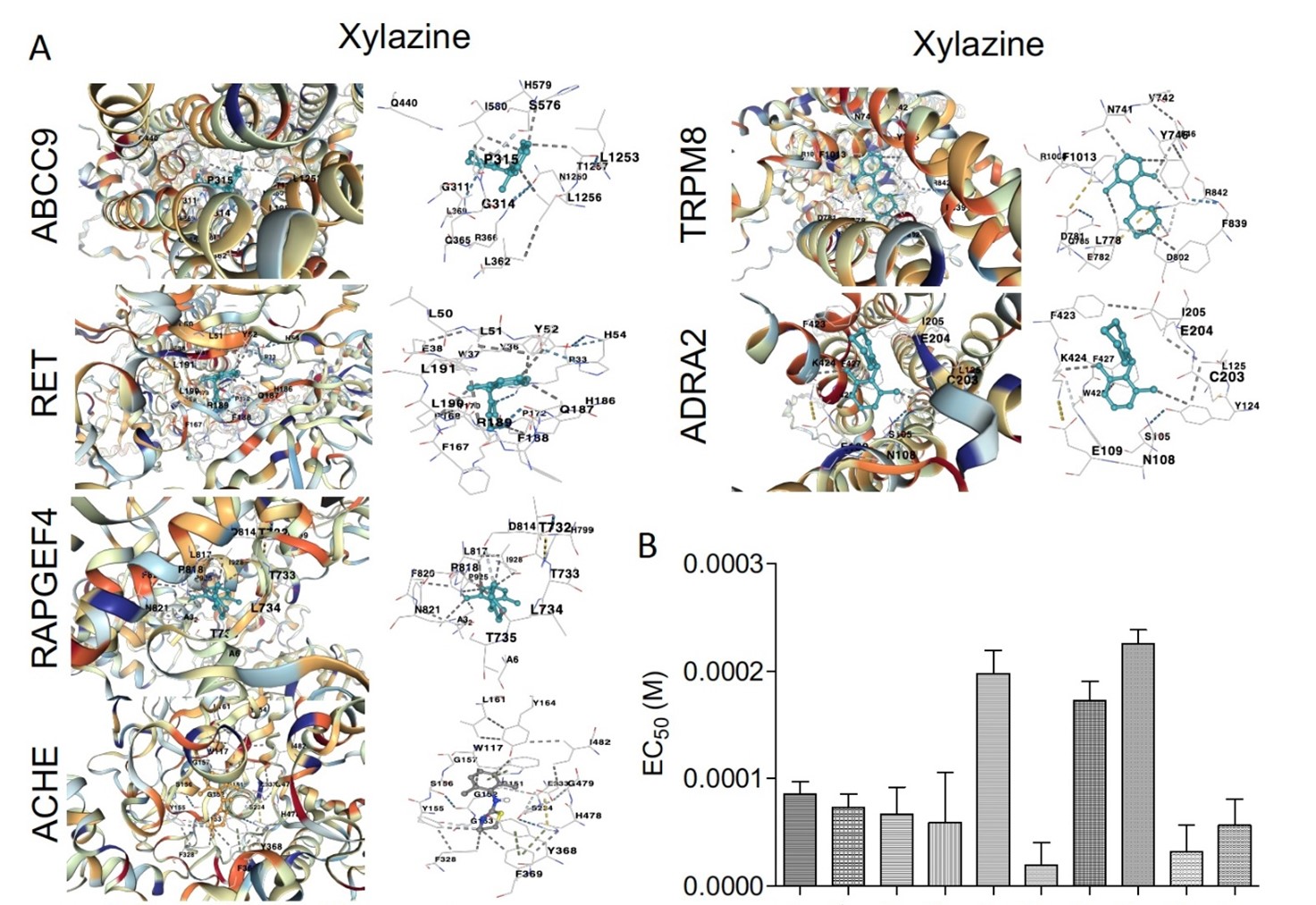Network pharmacology of xylazine to understand its health consequences and develop mechanistic-based remediations
Authors: Arun HS Kumar
Ger. J. Vet. Res
2024.
vol. 4, Iss. 2
pp:24-33
Doi: https://doi.org/10.51585/gjvr.2024.2.0082

Abstract:
The recent rise in xylazine use disorders (XUD) in humans is a significant cause for concern as a comprehensive understanding of its molecular pathology is limited, and hence, the ability to reverse the potential adverse effects is lacking. To address this gap, this study evaluates the dose-dependent impact of xylazine and its interactions with various potential targets to identify an optimal reversal strategy. A trichotomized (Low, medium, and high) dose, volume of distribution, and predicted plasma concentration of xylazine were defined. A detailed analysis of xylazine's network protein targets and their tissue-specific expression was performed using classical pharmacoinformatic tools. Molecular docking was used to assess the drug-target affinities and identify potential reversal agents. The study categorized xylazine plasma concentrations ranging from 5-8 µM, 14-20 µM, and 28-40 µM as low, medium, and high concentrations, respectively. Xylazine displayed a preferential affinity for hydrolases, kinases, transporters, and ion channels. Xylazine's network analysis revealed the following proteins: ABCC9, RET, RAPGEF4, ACHE, TGFBR1, PGR, KCNH2, KCNN2, and TRPM8 as its high-affinity targets. The tissue-specific expression of these high-affinity targets suggested potential adverse effects on various organs, particularly skeletal and smooth muscles and the adrenal gland. The study further explored the potential reversal of xylazine pharmacology using alpha2ARantagonists and CNS stimulants. Prazosin emerged as the most promising candidate, exhibiting a 200 to 2000-fold superior affinity against all high-affinity targets of xylazine. This study contributes to our understanding of xylazine's molecular mechanisms, which could be relevant to its pharmacological effects in all species, and suggests that prazosin can serve as an effective therapeutic option for mitigating xylazine-induced adverse effects in XUD patients, which warrants clinical investigation.
Keywords:
Drug abuse, Prazosin, Toxicity, Xylazine, Xylazine use disorders
Statistics:
Article Views: 954
PDF Download: 27